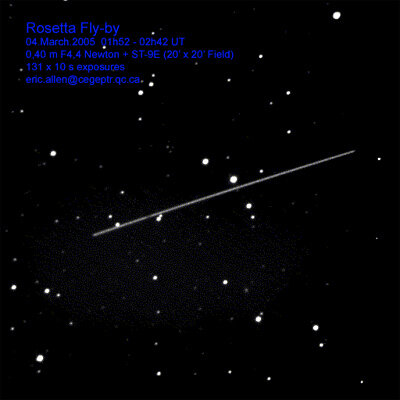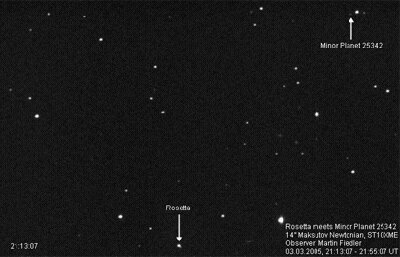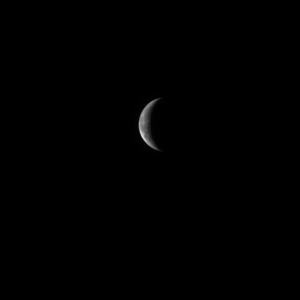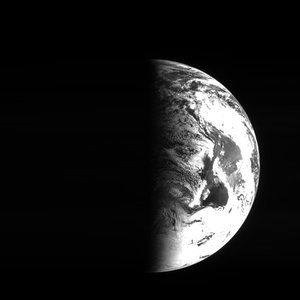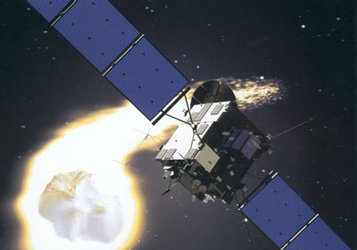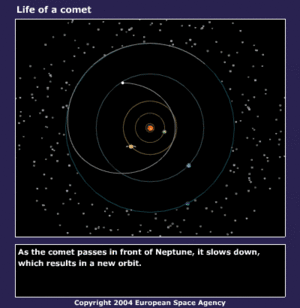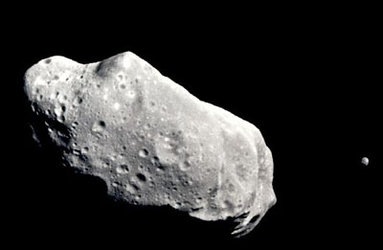Rosetta Up Close photo contest winners announced
ESA received more than 45 fascinating images from Canada, USA, Europe and Africa during last month's 'Rosetta Up Close' photo contest.
Competition was tight, the quality was universally high and the judges' job was tough; in the end, eight winners in two categories were selected. Here we present the winning images, as well as all the submissions.
Eight winning images in two categories (still and animated) for the 'Rosetta Up Close' photo contest were chosen earlier this month and they're great! This article presents the eight winners (below) and includes links to an online album showing the rest.
Judging tension runs high
On Friday 7 April, seven members of the Astronomy Club at ESA's European Space Research and Technology Centre (ESTEC) met to review the images submitted and select the winners. The contest, hosted by the Communications Office at ESA's European Space Operations Centre (ESOC), in Darmstadt, offered some great prizes, including a VIP pass to attend the Venus Express launch.
This meant that competition was especially fierce and tension was palpable as the judges, led by Dr Detlef Koschny, a senior Rosetta mission scientist and himself a keen amateur astronomer, started the review.
The review committee first agreed on the criteria for judging the images. It was agreed to use the following criteria:
Aesthetic appearance: The image should look 'nice'
Equipment used: In general, using more 'amateur-like' equipment should give a higher ranking than using a more professional telescope and camera
- Special effects: Images showing magnitude changes, asteroids or galaxies in the field of view or showing Rosetta speeding up as it approached Earth were given more weight
Furthermore, it was decided that the distance of the spacecraft to Earth when the image was taken would not play a role in judging. Both large distances and very short distances pose a challenge; the former since Rosetta would be very faint, the latter since the craft would be moving very fast.
Also, images were split into two categories: Group A (still) and Group B (animated); these were judged separately, thus there are 1st, 2nd and 3rd prizes to be awarded in each category.
Submissions from international amateurs
A total of 36 people submitted images from Europe, USA, Canada and South Africa comprising 49 still images and 17 animations. The committee assessed all images in Round 1 and from this produced a short list of some 10 still images and 8 animations. These were discussed and reassessed in detail and judged according to the criteria mentioned earlier.
Group A - still images
In Group A, the judges are pleased to announce the following winners:
1st Place: Erich Meyer, Davidschlag Observatory, Austria. This shows Rosetta on 4 March 2005 at 20:10 UTC. The image is esthetically very pleasing, tracking Rosetta and showing the stars as sharp, regular lines. It was taken with a rather large telescope (60 cm), however, this is still a privately funded amateur telescope.
2nd Place: Rolando Ligustri, Talmassons, Italy. He took a series of three images with an 80-mm refractor and an SBIG ST9e CCD camera on 4 March 2005 at 19:30, 20:30 and 21:20 UTC. These images are also esthetically pleasing, showing Rosetta as a faint line in front of many stars. In addition, the images nicely show the increase of apparent speed of the spacecraft. Each image is a one-minute exposure, but the line Rosetta makes gets longer and longer.
3rd Place: Stefano Sposetti, Gnosca, Switzerland. Stefano recorded Rosetta with a 40-cm telescope taken on 2 March 2005 around 00:00 UTC. He presents it showing black stars on a white background, i.e. as a negative image. The image shows fairly faint stars and several galaxies. It reminded the committee of the old photographic plates used in the pioneering days of astronomy.
Group B - animations
In this group, it was much more difficult to select the best candidates and judges spent a lot of time deliberating. In the end, the committee compromised and selected three second-place winners:
1st Place: Thomas Hugentobler, Switzerland. He was the first person to submit an image, which showed Rosetta as a faint moving dot at a distance of 1.44 million km on 28 February at 21:38 UTC. While we later received an image showing Rosetta at an even larger distance, Mr Hugentobler managed to take his image sequence with an off-the-shelf commercial amateur telescope, a Meade SCT 12", and an SBIG ST7 CCD camera.
2nd Place (A): Eric J. Allen, Canada. His image, taken on 4 March 2005, 01:52 UTC, is very attractive as the spacecraft is a very smoothly moving dot, a consequence of the high number of images taken (131) at short exposure times, making it particularly pleasing to watch.
2nd Place (B): G. Masi, F. Mallia, R. Wilcox. They imaged Rosetta on 4 March 2005 from 02:04 to 02:45 UTC. Their animation ends with a nice sum image which looks like a string of pearls, which is also very aesthetically pleasing. The group used a telescope remotely operated in Chile and the judges spent some time confirming that the team really qualified as amateurs (they do).
2nd Place (C): Martin Fiedler, Radebeul, Germany. This image shows Rosetta on 3 March 2005 around 21:13 to 21:55 UTC. Again, the committee enjoyed the smooth motion of Rosetta with no jumps visible. In addition, the image also shows minor planet 25342 moving in the background. This is definitely a 'special effect' as defined in the selection criteria.
- 3rd Place: Carolina and Francesco Fumagalli, Italy. Using a 310-mm f/5 telescope from Calina observatory on 4 March 2005 at 20:05 UTC, the two prepared a short animation showing Rosetta passing 31 Leo; it dramatically shows the faintness of the spacecraft relative to the star. Carolina is the daughter of Francesco, and the committee wishes to promote with this selection the cooperation between generations.
The judges wish to thank all participants and wish them good luck with future stargazing.
Editor's note: Winners will be contacted in the next several weeks to confirm addresses and issue prizes.
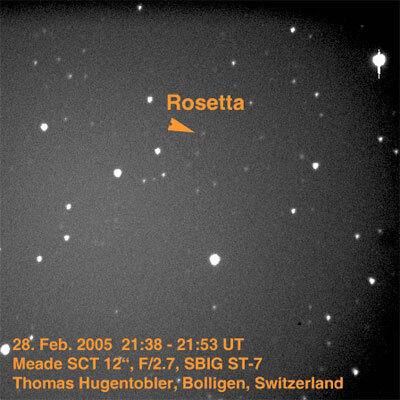
Note:
Click on the stills on the left and below to see the animation.
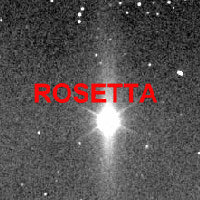
See the online album with all photos.





